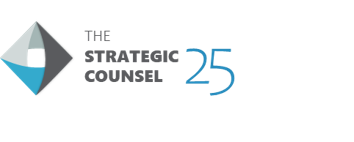



Target audience
| LOCATION | GROUP | LANGUAGE | DATE | TIME (EST) | GROUP COMPOSITION | NUMBER OF PARTICIPANTS |
|---|---|---|---|---|---|---|
| Eastern Ontario | 1 | English | November 1 | 6:00-8:00 pm | Post-Secondary Students | 7 |
| Prince Edward Island | 2 | English | November 2 | 5:00-7:00 pm | General Population | 7 |
| Eastern Canada (Atlantic Region & Ontario) | 3 | English | November 8 | 6:00-8:00 pm | Young adults, aged 25-30 | 7 |
| Quebec | 4 | French | November 9 | 6:00-8:00 pm | Haitian Diaspora | 6 |
| City of Toronto | 5 | English | November 10 | 6:00-8:00 pm | Iranian Canadians | 8 |
| British Columbia | 6 | English | November 15 | 9:00-11:00 pm | People Nearing Retirement | 6 |
| Mid-size and Major Centres Alberta | 7 | English | November 16 | 8:00-10:00 pm | Prospective Vehicle Buyers/Lessees | 7 |
| Mauricie and Centre-du-Québec Region | 8 | French | November 17 | 6:00-8:00 pm | Young adults, aged 18-30 | 7 |
| Metro Vancouver | 9 | English | November 22 | 9:00-11:00 pm | Not Received 4th Dose of COVID-19 Vaccine | 8 |
| Western Canada (BC, AB, SK, MB) | 10 | English | November 23 | 8:00-10:00 pm | Young adults, aged 18-24 | 7 |
| Saguenay – Lac-Saint-Jean Region, Quebec | 11 | French | November 24 | 6:00-8:00 pm | General Population | 7 |
| Mid-size and Major Centres Prairies | 12 | English | November 28 | 8:00-10:00 pm | Working Mothers | 8 |
| Total number of participants | 85 | |||||

In the above image, the word ‘Canada’ is written in black font over a white background. Over the final ‘a’ there is a coloured, red and white, Canadian flag.
Above is a short, two-second, audio clip featuring the opening notes of the Canadian national anthem.
| Group | Date | Time (EDT/EST) | Local Time | Location | Composition | Moderator |
|---|---|---|---|---|---|---|
| 1 | Tues., November 1st | 6:00-8:00 (EDT) | 6:00-8:00 (EDT) | Eastern Ontario | Post-Secondary Students | TBW |
| 2 | Wed., November 2nd | 5:00-7:00 (EDT) | 6:00-8:00 (ADT) | Prince Edward Island | General Population | MP |
| 3 | Tues., November 8th | 6:00-8:00 (EST) | 6:00-8:00 (EST) 7:00-9:00 (AST) 7:30-9:30 (NST) |
Eastern Canada (Atlantic Region & ON) | Young adults, aged 25-30 | TBW |
| 5 | Thurs., November 10th | 6:00-8:00 (EST) | 6:00-8:00 (EST) | City of Toronto | Iranian Canadians | DN |
| 6 | Tues., November 15th | 9:00-11:00 (EST) | 6:00-8:00 (PST) | British Columbia | People Nearing Retirement | TBW |
| 7 | Wed., November 16th | 8:00-10:00 (EST) | 6:00-8:00 (MST) | Mid-size and Major Centres Alberta | Prospective Vehicle Buyers/Lessees | DN |
| 9 | Tues., November 22nd | 9:00-11:00 (EST) | 6:00-8:00 (PST) | Metro Vancouver – British Columbia | Not Received 4th Dose of COVID-19 Vaccine | TBW |
| 10 | Wed., November 23rd | 8:00-10:00 (EST) | 7:00-9:00 (CST) 6:00-8:00 (MST) 5:00-7:00 (PST) |
Western Canada (SK, MB, AB, BC) | Young adults, aged 18-24 | DN |
| 12 | Mon., November 28th | 8:00-10:00 (EST) | 7:00-9:00 (CST) | Mid-size and Major Centres Prairies | Working Mothers | TBW |
| LOCATION | CITIES | |
|---|---|---|
| Eastern Ontario | Cities include (but are not limited to): Ottawa, Kingston, Belleville, Cornwall, Brockville, Prince Edward, Russell, Greater Napanee, Pembroke, Rockland, Hawkesbury, Smiths Falls, Embrun, Renfrew, Arnprior, Prescott, Perth.
ENSURE A GOOD MIX OF CITIES ACROSS THE REGION. NO MORE THAN TWO PER CITY. INCLUDE THOSE RESIDING IN LARGER AND SMALLER COMMUNITIES. |
CONTINUE - GROUP 1 |
| Prince Edward Island | Cities could include (but are not limited to): Charlottetown, Summerside, Stratford, Cornwall.
MAX 4 PARTICIPANTS FROM CHARLOTTETOWN. NO MORE THAN TWO PER OTHER CITY. ENSURE A GOOD MIX OF CITIES ACROSS THE REGION. INCLUDE THOSE RESIDING IN LARGER AND SMALLER COMMUNITIES. |
CONTINUE - GROUP 2 |
| Eastern Canada (Atlantic Region & ON) | Cities could include (but are not limited to): NS: Halifax, Dartmouth, Cape Breton-Sydney. NB: Moncton, Saint John, Fredericton, Dieppe, Miramichi, Edmundston. PEI: Charlottetown, Summerside. N&L: St. John’s, Conception Bay, Mount Pearl, Corner Brook. ON: Toronto, Ottawa-Gatineau, Hamilton, Kitchener, London, Oshawa, Thunder Bay, Sudbury, Peterborough, Belleville, Stratford, Bolton, Collingwood, Owen Sound, Brockville, Cobourg, Fort Erie, Simcoe. ENSURE 4 PARTICIPANTS FROM ONTARIO. AT LEAST 1 PARTICIPANT FROM EACH ATLANTIC PROVINCE. ENSURE A GOOD MIX OF CITIES ACROSS BOTH REGIONS. INCLUDE THOSE RESIDING IN LARGER AND SMALLER COMMUNITIES. |
CONTINUE - GROUP 3 |
| City of Toronto |
City includes:
City of Toronto. PARTICIPANTS SHOULD RESIDE IN THE ABOVE-NOTED CENTER PROPER. |
CONTINUE - GROUP 5 |
| British Columbia | Cities could include (but are not limited to): Vancouver, Surrey, Victoria, Richmond, Burnaby, Kelowna, Abbotsford, Nanaimo, Kamloops, White Rock, Chilliwack, Prince George, Vernon, Port Alberni, Squamish, Prince Rupert, Williams Lake, Kitimat, Smithers.
MAX 3 PARTICIPANTS FROM THE LOWER MAINLAND AND 1 FROM VANCOUVER ISLAND. ENSURE A GOOD MIX OF CITIES ACROSS THE REGION. INCLUDE THOSE RESIDING IN LARGER AND SMALLER COMMUNITIES. |
CONTINUE - GROUP 6 |
| Mid-size and Major Centres Alberta | Major population = 100,000+ Calgary, Edmonton. Mid-size population = 50,000-99,999 Red Deer, Lethbridge, Wood Buffalo, Airdrie, Fort McMurray, Medicine Hat, Grande Prairie. ENSURE AT LEAST ONE EACH FROM CALGARY AND EDMONTON. NO MORE THAN TWO PER CITY. INCLUDE THOSE RESIDING IN LARGER AND SMALLER COMMUNITIES. |
CONTINUE - GROUP 7 |
| Metro Vancouver – British Columbia | Cities/towns include: Vancouver, Surrey, Burnaby, Richmond, Coquitlam, Township of Langley, Delta, Maple Ridge, District of North Vancouver, New Westminster, Port Coquitlam, City of North Vancouver, West Vancouver, Port Moody, City of Langley, White Rock, Pitt Meadows, Bowen Island, Anmore, Lions Bay, Belcarra.
ENSURE A GOOD MIX OF CITIES/TOWNS ACROSS THE REGION. NO MORE THAN 3 FROM CITY OF VANCOUVER & 1 PER OTHER CITY. |
CONTINUE - GROUP 9 |
| Western Canada (SK, MB, AB, BC) | Cities include (but are not limited to): Saskatchewan: Saskatoon, Regina, Prince Albert, Moose Jaw, Swift Current, Yorkton, North Battleford, Warman, Weyburn, Estevan. Manitoba: Winnipeg, Brandon, Steinbach, Winkler, Portage la Prairie, Thompson, Selkirk, Morden. Alberta: Calgary, Edmonton, Red Deer, Lethbridge, Airdrie, Fort McMurray, Medicine Hat, Grande Prairie, Spruce Grove, Fort Saskatchewan, Chestermere, Beaumont, Camrose, Stony Plain, Sylvan Lake. British Columbia: Vancouver, Victoria, Kelowna, Abbotsford, Surrey, Kamloops, Chilliwack, Prince George, Vernon, Penticton, Parksville, Duncan, Tsawwassen, Ladner, Squamish, Fort St. John. ENSURE 2 PARTICIPANTS FROM EACH PROVINCE. NO MORE THAN 1 FROM EACH CITY. ENSURE A GOOD MIX OF CITIES ACROSS THE REGION. INCLUDE THOSE RESIDING IN LARGER AND SMALLER COMMUNITIES. |
CONTINUE - GROUP 10 |
| Mid-size and Major Centres Prairies | Cities include: Manitoba: Winnipeg, Brandon, Steinbach, Winkler, Portage la Prairie, Thompson. Saskatchewan: Saskatoon, Regina, Prince Albert, Moose Jaw. ENSURE 4 PARTICIPANTS FROM EACH PROVINCE. NO MORE THAN TWO FROM EACH CITY. ENSURE A GOOD MIX OF CITIES ACROSS THE REGION. |
CONTINUE - GROUP 12 |
| Less than two years | THANK AND END |
|---|---|
| Two years or more | CONTINUE |
| Don’t know/Prefer not to answer | THANK AND END |
| Under 18 years of age | IF POSSIBLE, ASK FOR SOMEONE OVER 18 AND REINTRODUCE. OTHERWISE THANK AND END. |
|---|---|
| 18-24 | IF WESTERN CANADA = GROUP 10 IF EASTERN CANADA = THANK AND END ALL OTHER LOCATIONS, CONTINUE |
| 25-30 | IF EASTERN CANADA = GROUP 3 IF WESTERN CANADA = THANK AND END ALL OTHER LOCATIONS, CONTINUE |
| 31-40 | IF EASTERN CANADA = THANK AND END IF WESTERN CANADA = THANK AND END ALL OTHER LOCATIONS, CONTINUE |
| 41-50 | |
| 51-64 | |
| 65+ | |
| VOLUNTEERED Prefer not to answer |
THANK AND END |
| Yes | CONTINUE TO Q.4a |
|---|---|
| No | THANK AND END |
| Don’t know/Prefer not to answer |
| University – Undergraduate | CONTINUE |
|---|---|
| University – Postgraduate | |
| College | |
| Technical/Trade School | |
| Fine Arts School | |
| VOLUNTEERED Prefer not to answer |
THANK AND END |
| Less than 5 years | CONTINUE - GROUP 5 |
|---|---|
| 5 to 9 years | |
| 10 to 19 years | |
| 20 to 29 years | |
| 30 or more years | |
| Don’t know/Prefer not to answer | THANK AND END |
| Male | CONTINUE |
|---|---|
| Female | CONTINUE |
| GROUPE | DATE | HEURE (HAE) | HEURE (LOCALE) | LIEU | COMPOSITION DU GROUPE | MODÉRATEUR |
|---|---|---|---|---|---|---|
| 4 | 9 novembre | 18 h-20 h | 18 h-20 h | Québec | Diaspora haïtienne | MP |
| 8 | 17 novembre | 18 h-20 h | 18 h-20 h | Région de la Mauricie et Centre-du-Québec | Jeunes adultes de 18 à 30 ans | MP |
| 11 | 24 novembre | 18 h-20 h | 18 h-20 h | Région du Saguenay – Lac-Saint-Jean | Population générale | MP |
| LIEU | VILLES | |
|---|---|---|
| Québec | Ces villes peuvent notamment comprendre :
Grandes villes = Population 100 000+ Pour les grandes villes : Montréal, Gatineau, Québec City, Saguenay, Sherbrooke, Trois-Rivières, Saint-Jérôme, Chicoutimi – Jonquière. Taille moyenne = Population 50 000-99 999 Pour les villes de taille moyenne : Saint-Jean-sur-Richelieu, Chateauguay, Drummondville, Granby, Saint-Hyacinthe. Petites villes = Population > 49 999 Pour les petites villes : Saint-Georges, Val-d’Or, Sept-Îles, Varennes, Alma. ESSAYER DE RECRUTER AU MOINS DEUX RÉSIDENTS DANS CHAQUE CATÉGORIE DE VILLE (EN FONCTION DE LA TAILLE DE LA POPULATION). PAS PLUS D’UN PARTICIPANT PAR VILLE. ASSURER UNE BONNE REPRÉSENTATION DES VILLES DE LA PROVINCE. RECRUTER DES RÉSIDENTS DE GRANDES ET DE PETITES COLLECTIVITÉS. |
CONTINUER - GROUPE 4 |
| Région de la Mauricie et Centre-du-Québec | Les villes peuvent notamment comprendre : Mauricie : Trois-Rivières, Shawinigan, La Tuque, Louiseville, Saint-Tite, Saint-Luc-de-Vincennes Centre-du-Québec : Drummondville, Victoriaville, Bécancour, Nicolet, Plessisville. Princeville, Warwick, Daveluyville, Kingsey Falls ASSURER UNE BONNE REPRÉSENTATION DES VILLES DE LA RÉGION. PAS PLUS DE DEUX PARTICIPANTS PAR VILLE. |
CONTINUER - GROUPE 8 |
| Région du Saguenay – Lac-Saint-Jean | Les villes peuvent notamment comprendre : Alma, Dolbeau-Mistassini, Normandin, Roberval, Saguenay, Saint-Ambroise, Saint-Félicien, Saint-Honoré ASSURER UNE BONNE REPRÉSENTATION DES VILLES DE LA RÉGION. PAS PLUS DE TROIS PARTICIPANTS PAR VILLE. RECRUTER DES RÉSIDENTS DE GRANDES ET DE PETITES COLLECTIVITÉS. |
CONTINUER - GROUPE 11 |
| Autre lieu | - | REMERCIER ET CONCLURE |
| RÉPONSE SPONTANÉE Préfère ne pas répondre | - | REMERCIER ET CONCLURE |
| Moins de deux ans | REMERCIER ET CONCLURE |
|---|---|
| Deux ans ou plus | CONTINUER |
| Ne sais pas/Préfère ne pas répondre | REMERCIER ET CONCLURE |
| Moins de 18 ans | SI POSSIBLE, DEMANDER À PARLER À UNE PERSONNE DE 18 ANS OU PLUS ET REFAIRE L’INTRODUCTION. SINON, REMERCIER ET CONCLURE. |
|---|---|
| 18 à 24 ans | + RÉGION MAURICIE ET CENTRE-DU-QUÉBEC = GROUPE 8 TOUS LES AUTRES LIEUX, CONTINUER |
| 25 à 30 ans | |
| 31 à 44 ans | + RÉGION MAURICIE ET CENTRE-DU-QUÉBEC = REMERCIER ET CONCLURE TOUS LES AUTRES LIEUX, CONTINUER |
| 45 à 54 ans | |
| 55 ans ou plus | |
| RÉPONSE SPONTANÉE Préfère ne pas répondre | REMERCIER ET CONCLURE |
| Depuis moins de 5 ans | CONTINUER – GROUPE 4 |
|---|---|
| Depuis 5 à 9 ans | |
| Depuis 10 à 19 ans | |
| Depuis 20 à 29 ans | |
| Depuis 30 ans ou plus | |
| Ne sais pas/préfère ne pas répondre | REMERCIER ET CONCLURE |

In the above image, the word ‘Canada’ is written in black font over a white background. Over the final ‘a’ there is a coloured, red and white, Canadian flag.
Above is a short, two-second, audio clip featuring the opening notes of the Canadian national anthem.